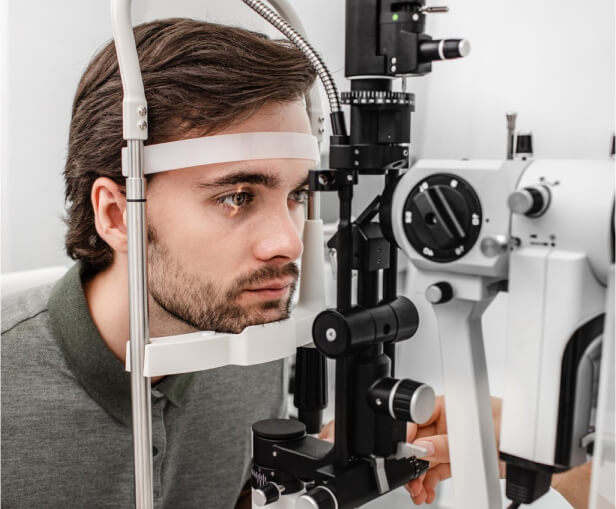
The Right Contact Lens Exam Makes All the Difference

What Is a Contact Lens Exam?
Why Are Contact Lens Exams Important?

Our Contact Lens Options
Standard Contacts
For many patients, standard lenses are a great way to see clearly without having to rely on glasses. Since we understand that every patient has different needs, our doctors have a variety of brands to consider, with options ranging from daily to monthly wear.
Scleral Lenses & Other Specialty Contacts
Some patients can’t wear standard contacts because they have poor front-of-eye health or “hard-to-fit” eyes. Fortunately, specialty options are available at our Greenwood and Fishers locations. Our scleral lenses can help patients with corneal conditions like dry eye by retaining moisture and protecting eyes from external irritants. Likewise, our Neurolens® glasses can correct both vision and eye misalignment using contoured prism designs.
Myopia Management Lenses
Myopia management lenses do more than correct your child’s vision: they also slow down the progression of nearsightedness. Working with Treehouse Eyes, we use these lenses to reduce the risks associated with high levels of myopia, such as an increased likelihood of developing eye diseases like retinal detachment, glaucoma, and macular degeneration later in life.

Amniotic Membranes

Contact Lens Exams at VisionQuest Eyecare
When you choose VisionQuest Eyecare, you get a personalized eye care experience every time. From comprehensive eye exams to specialized contact lens exams, our doctors take their time to get it right. We use advanced diagnostic and measurement technology, like corneal topography, to assess the overall health of your eyes and obtain precise measurements for a clear, comfortable fit. We also offer various lens and brand options, to accommodate many eye care and vision needs. Visit any our locations in Greenwood or Fishers to see the difference our care can make!
Related Blogs
How to Manage Nearsightedness (Myopia) in Children and Prevent Progression
Nearsightedness, or myopia, is one of the most common vision conditions in the U.S., affecting over 30% of the population. Among children, it is a growing concern, with an estimated 20-25 million experiencing myopia today. If your child struggles to see distant...
Can Screen Time Make My Child’s Myopia Worse?
As technology continues to become an integral part of daily life, children are spending more time on screens than ever before. Whether it’s for online learning, gaming, or entertainment, prolonged screen use has raised concerns about its impact on children’s eye...
How to Find the Best Eye Doctor Near Me in Greenwood, IN
Finding a reliable eye doctor in Greenwood, IN, is essential for maintaining your vision and eye health. Whether you’re searching for a comprehensive eye exam, treatment for specific eye conditions, or specialty services like contact lens fittings, knowing how to...






